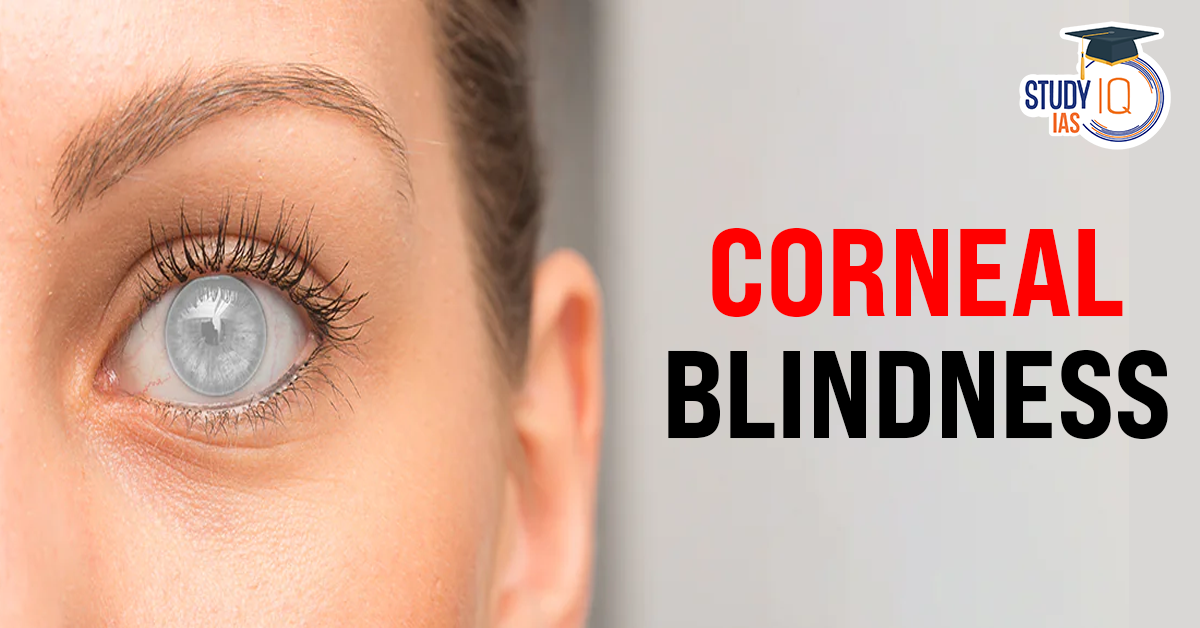Table of Contents
Corneal blindness is one of the leading causes of vision impairment and blindness in India, with a significant impact on public health. It accounts for about 7.5% of the total blindness burden in the country. This issue, exacerbated by factors like limited access to eye care in rural areas, infections, and trauma, demands urgent attention from policymakers and healthcare providers.
This article provides an in-depth analysis of corneal blindness in India, including its causes, prevalence, challenges, and policy interventions.
Corneal Blindness in Karnataka
Corneal blindness accounts for 15-20% of total blindness cases in Karnataka, significantly impacting rural areas with limited access to eye care. The primary causes have shifted from infections like keratitis to eye trauma and complications. Despite advances, poor hygiene, delayed medical interventions, and healthcare disparities aggravate the problem. Strengthening healthcare infrastructure, raising awareness, and improving access to treatment are crucial for reducing this burden. Early intervention and preventive measures remain key to addressing corneal blindness effectively.
What is Corneal Blindness?
Corneal blindness refers to vision loss caused by damage or disease affecting the cornea, the transparent front layer of the eye. The condition can lead to partial or complete blindness if left untreated.
Symptoms
- Redness and irritation in the eye.
- Reduced vision or blurred vision.
- Sensitivity to light.
- Visible opacity or clouding of the cornea.
Prevalence in India
India faces a growing burden of corneal blindness, with an estimated 20,000 to 25,000 new cases annually. According to healthcare experts, this condition affects all age groups but is particularly severe among:
- Children and working-age adults exposed to malnutrition and injuries.
- Elderly individuals prone to degenerative conditions.
Regional Disparities
In states like Karnataka, corneal blindness contributes to 15-20% of all blindness cases, reflecting disparities in access to healthcare. Rural areas bear the brunt due to inadequate medical facilities.
Causes of Corneal Blindness in India
1. Infectious Diseases
- Keratitis: An infection of the cornea caused by bacteria, fungi, or viruses.
- Trachoma: Once prevalent, it is now under control due to improved sanitation and healthcare.
2. Eye Trauma
- Injuries from agricultural and industrial activities are common, especially in rural and semi-urban areas.
3. Nutritional Deficiencies
- Vitamin A deficiency weakens the cornea, making it prone to infections and ulcers.
4. Degenerative Conditions
- Age-related disorders lead to the gradual weakening of the cornea.
Challenges in Combating Corneal Blindness
1. Limited Access to Eye Care
Rural areas often lack advanced eye care facilities, resulting in delayed diagnosis and treatment.
2. Poor Awareness
A lack of awareness about early symptoms and treatment options aggravates the issue, especially in underserved regions.
3. Hygiene and Malnutrition
Unhygienic practices and malnutrition increase susceptibility to corneal infections and injuries.
4. Shortage of Donated Corneas
India faces a severe shortage of corneal donors, limiting the availability of corneal transplants.
Policy Interventions and Solutions
1. National Programme for Control of Blindness (NPCB)
Launched in 1976, the NPCB aims to reduce the prevalence of blindness through:
- Free eye surgeries.
- Eye screening camps in rural areas.
- Promotion of cornea donation.
2. Awareness Campaigns
Educating communities about hygiene, nutrition, and early intervention is crucial for reducing corneal blindness.
3. Improving Eye Banking Infrastructure
Strengthening eye banks to promote corneal donations and ensure the timely availability of transplants.
4. Integration with Healthcare Services
Primary health centers (PHCs) can play a pivotal role in early detection and referral of corneal diseases.
Way Forward
- Strengthening Rural Healthcare: Expanding eye care services in rural areas to reduce disparities.
- Boosting Research and Innovation: Developing cost-effective treatments and prosthetics.
- Incentivizing Eye Donations: Encouraging individuals and families to pledge their corneas.
- Public-Private Partnerships: Collaborating with NGOs and private organizations to enhance outreach.


 SAMARTH Udyog Bharat 4.0: Transforming I...
SAMARTH Udyog Bharat 4.0: Transforming I...
 BHIM 3.0 Launched by NPCI: Key Features,...
BHIM 3.0 Launched by NPCI: Key Features,...
 150th Summit of Inter-Parliamentary Unio...
150th Summit of Inter-Parliamentary Unio...





















